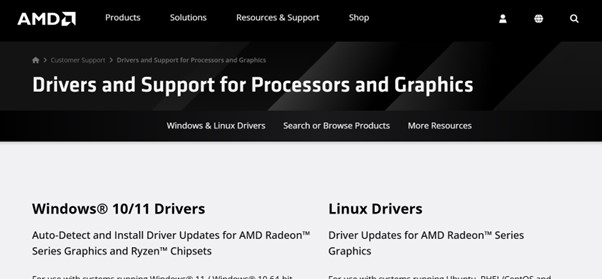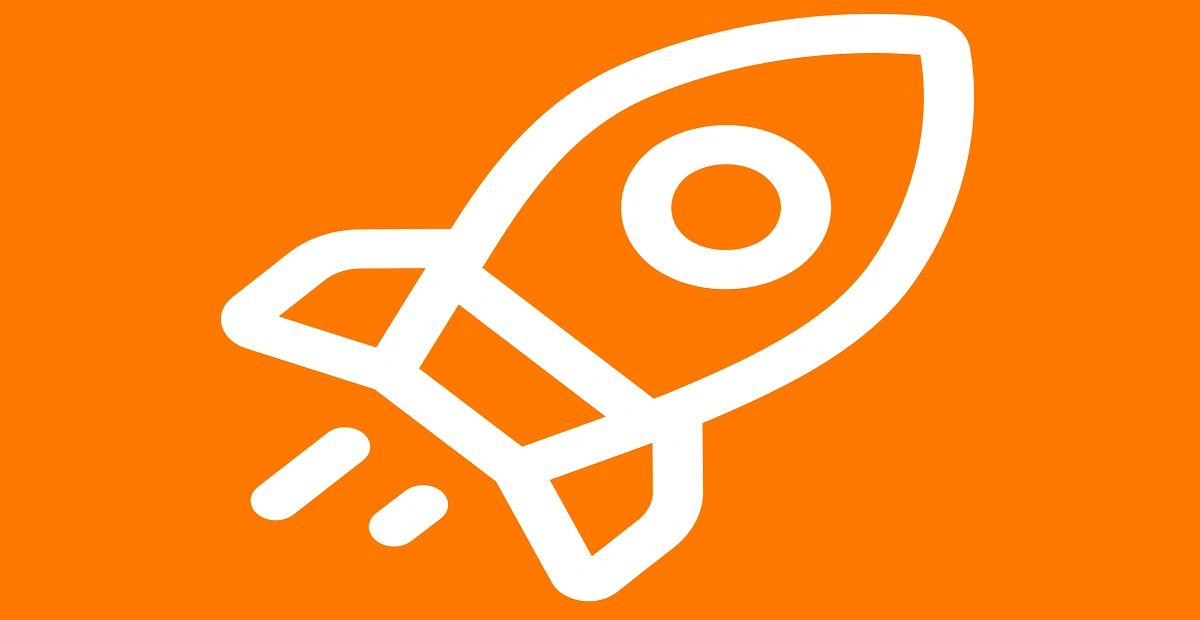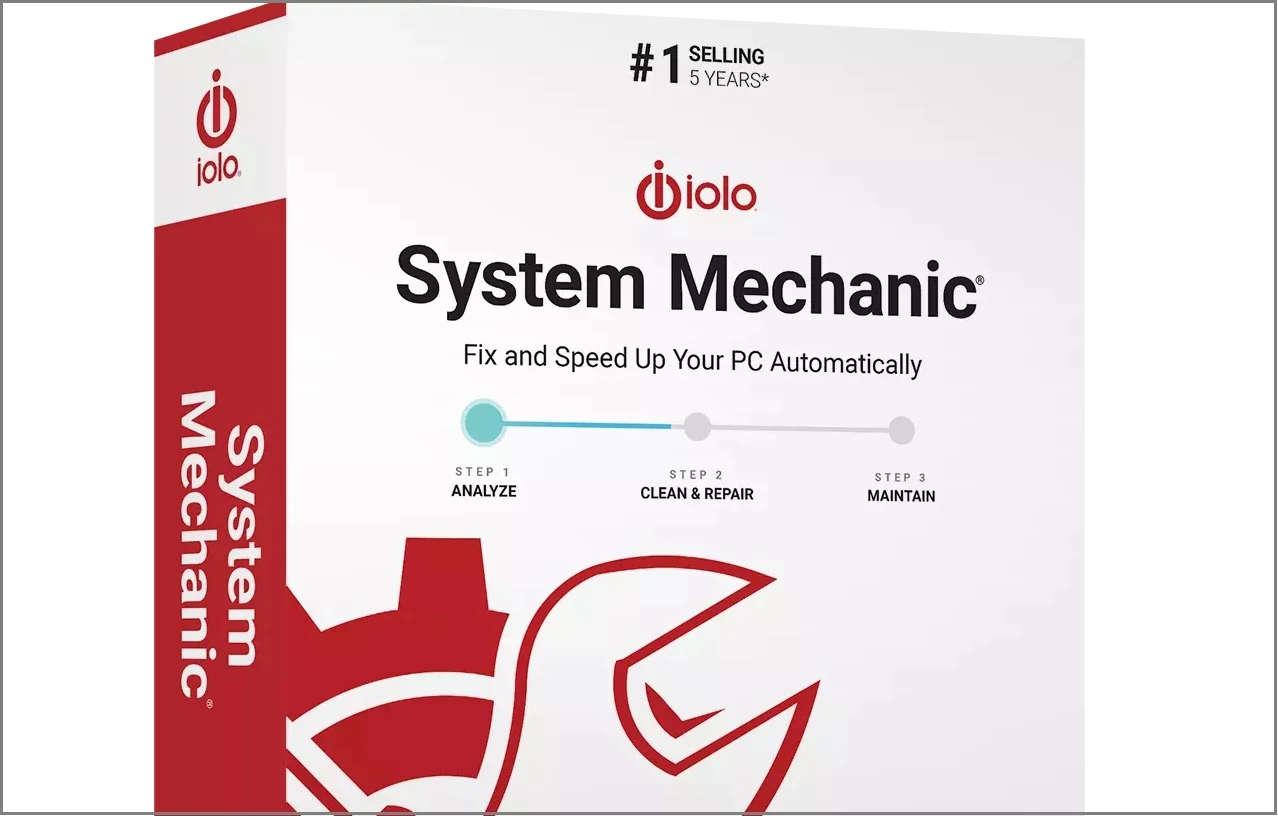How to Update Display Driver on Windows 11/10 [Easiest Ways]
You might already be aware that between your graphics card and Windows OS, your display driver serves as an essential channel for communication. A driver that is out of date or corrupt can cause several annoying problems, ranging from slow performance and visual abnormalities to complete system instability.
Maintaining the most recent versions of your graphics drivers is crucial for gaming, system stability, and peak performance. You’ve arrived to the ideal location if you’re asking how to update the display drivers on Windows 11/10. This tutorial will show you how to make sure your system is using the newest and best display drivers in the simplest and most efficient ways possible.
What Are Display Drivers?
Well, Display Drivers are dedicated software which enable seamless communication between your operating system and graphics hardware. The graphics card or integrated GPU (Graphics Processing Unit) and Windows OS communicate with one other through these intermediaries. Your operating system instructs the display driver, which in turn instructs your graphics hardware on what to render on your screen while you play a game or watch a film. These drivers include essential code that enhances performance, resolves issues, and makes your graphics card capable of new functions.
To increase stability, performance, and compatibility, major graphics card makers like NVIDIA, AMD, and Intel frequently release driver upgrades. Your computer wouldn’t be able to take advantage of your graphics hardware’s full potential without the right display drivers.
When You Need to Update Display Drivers?
Understanding when to update your display driver can help you avoid annoying visual problems. The following significant circumstances usually call for updating your drivers:
- If you observe crashes, stuttering, or frame drops in graphics-intensive apps.
- For complete compatibility, new OS versions occasionally call for updated drivers.
- Manufacturers frequently use driver updates to introduce new features.
- If your system unexpectedly loses the ability to recognize monitors or keep the right resolutions.
- If your graphics driver is mentioned in any error messages that you receive.
- The optimizations found in the most recent drivers are frequently advantageous for new games.
- If you frequently see coloured dots, lines, or odd patterns that appear on your screen.
- Always upgrade to the most recent drivers when installing new hardware & after installing a new graphics card.
Updating your display driver on a regular basis guarantee that your graphics hardware is operating at peak efficiency and stability. Most manufacturers advise looking for upgrades every one to three months.
When You Should Avoid Updating Display Drivers On Your Windows 11/10 PC?
Well, updating your display drivers is generally a good practice, but there are certain times when performing a video driver update is not suggested.
- When your OS is running well: You might adhere to the “if it’s not broken, don’t fix it” philosophy if your system is reliable and operating efficiently.
- Just before crucial work: There’s always a chance of issues, so don’t update drivers right before significant deadlines or presentations.
- Beta Drivers: Avoid installing Beta or experimental drivers on production systems unless you’re debugging a specific problem.
- Very old hardware: Performance may be lowered if newer drivers eliminate optimizations for outdated hardware.
- Custom configuration systems: If you have unique configurations that function well with the drivers that are currently in use, or if you have customized multi-GPU setups.
- Without a contingency plan: Never update drivers without understanding how to undo the changes in case something goes wrong.
At last, always research for the specific update and consider its relevance to your system before proceeding.
Precautions Before Updating Display Drivers
Before you consider updating your display drivers on your Windows 11/10 PC, make sure you adhere to the following important precautions to ensure a smooth process:
- Perform System Restore: In the event that something goes wrong, you can restore your system by creating a restore point. For this, all you have to do is, simply go to the Search bar and look for “Create a restore point” option. Once found, click on the “Create” button on the same window and adhere to the instructions.

- Make a backup of your crucial files: Although they are uncommon, driver updates can occasionally result in unstable systems.
- Ensure stable power: To guarantee consistent power, plug laptops in and think about buying a UPS for desktop computers.
- Shut down every application: Make sure that no applications are active while the update is being performed.
- Note your current driver version: If you need to roll back, it will be easier if you take note of your current driver version. To do so, just hit the shortcut keys – WIN + X altogether and click on the “Device Manager”.
On the Device Manager window, simply locate “Display adapters” and expand the same. After this, just right-click your graphics card and choose “Properties” option from the right-click context menu. To see the most recent version, select the “Driver” tab.

- Verify the model of your hardware: To obtain the appropriate drivers, be sure to identify the specific graphics card you own.
- Temporarily turn off your antivirus program: Since some security programs can prevent drivers from installing, consider disabling it for some time.
- Download only from authorized sources: Drivers should always be downloaded via Windows Update or the manufacturer’s website.
- Check the release notes: Recognize any known problems and the modifications the new driver introduces.
- Be prepared for downtime: Because some driver upgrades require the requirement to let machine restarts.
By following these steps prior to updating your display driver, you may help avoid issues and make sure your system stays stable during the process.
How to Update Display Drivers on Windows 11/10?
These are some of the easiest methods to perform video driver updates:
Method 1: Using Windows Update
Although it might not always offer the most recent versions, Windows Update is the most straightforward method of updating display drivers.
STEP 1. Launch Windows Settings
For accessing this, simply click on the WIN + I key altogether.
STEP 2. On your operating system:
In Windows 11, select Windows Update from the panel on the left.
Click on Update & Security in Windows 10.
STEP 3. Click “Check for updates”
That’s it! At this point, Windows will automatically begin downloading and installing any relevant drivers that are available to install. Simply click on the Restart button to implement the changes with latest driver updates.

| Writer’s Tip: Windows Update usually offers more conservative, well-tested driver versions instead of the most recent releases, despite its convenience. |
Method 2: Using Device Manager
Device Manager provides a direct way to update drivers through Windows:
STEP 1. Launch Device Manager
After pressing Windows + X, choose Device Manager.
STEP 2. Extend the category of display adapters.
Expand the respective category of Display adapters by double clicking on the same.

STEP 3. Update your Display driver
To update your graphics card’s driver, right-click on it and choose Update from the context menu.
STEP 4. Follow the on-screen Instructions
Select “Search automatically for drivers” to allow Windows to locate the most recent version on the Internet.To finish the installation, adhere to the on-screen directions.
| Writer’s Tip: Device Manager may not always locate the most recent drivers, so if Windows is unable to locate them, try the manufacturer’s website as outlined in Method 3. |
Method 3: Directly from Manufacturer Websites
Get the most recent display driver update straight from the manufacturer of your graphics card:
On Your NVIDIA GPUs:
1. Go to the driver download website for NVIDIA.
2. Choose your product’s specifications (model, series, kind, etc.).
3. Select Search.
4. Download the operating system’s suggested driver.
5. Launch the installer that was downloaded and adhere to the prompts displayed on the screen.
6. Just restart your PC to implement the necessary changes once the updates are installed.

On Your AMD GPUs:
1. Go to the AMD driver download website.
2. From the drop-down choices, choose your product.
3. Press the Submit button.
4. Download the operating system’s suggested driver.
5. Launch the installer that was downloaded and adhere to the prompts displayed on the screen.
6. Just restart your PC to implement the necessary changes once the updates are installed.

On Your Intel Graphics:
1. Go to the Intel driver download page.
2. Determine which Intel graphics product you have.
3. Get the relevant driver.
4. Launch the installer that was downloaded & adhere to the prompts displayed on the screen.
5. After the installation is finished, restart your computer.

| Writer’s Tip: Make a folder just for driver downloads so you can quickly locate earlier iterations in case you need to roll back. |
Method 4: Using Manufacturer’s Software
Manufacturers of graphics cards provide exclusive software that can find and install driver updates automatically:
Experience with NVIDIA GeForce:
1. Install GeForce Experience after downloading it.
2. Open the app and log in using your NVIDIA credentials.
3. Select the “Check for updates” button under the Drivers tab.
4. Select Express Installation or Custom Installation after clicking Download, if it is available.
5. Observe the directions displayed on the screen.
6. When prompted, restart your computer.
Experience with AMD Radeon Software:
1. Install the AMD Radeon software after downloading it.
2. Open the program
3. Select the System tab
4. Click the Settings icon (gear).
5. Select “Check for Updates.”
6. If it’s accessible, download and install it by following the instructions.
7. When prompted, restart your computer.
Experience with Intel Support Assistant & Driver:
1. Install Intel DSA after downloading it.
2. Open the software
3. It will check your computer for out-of-date drivers automatically.
4. Download and install any available updates by following the instructions.
5. When prompted, restart your computer.
| Writer’s Tip: In addition to driver upgrades, these proprietary tools frequently come with extra settings and game optimization capabilities that can improve your gaming experience. |
Method 5: Use a Specialized Driver Updater Software
Multiple drivers can be updated and your system scanned by third-party tools:
1. Install and start the application after downloading a reliable driver updater (such as Driver Booster, Driver Easy, or Snappy Driver Installer).
2. To look for out-of-date drivers, run a scan.
3. From the list of available updates, pick your display driver.
4. To download and install, adhere to the instructions.
5. After the procedure is finished, restart your computer.

| Writer’s Tip: Use third-party tools with caution. Reputable solutions should be used instead than ones that demand money for fundamental features. In general, the official tools from the manufacturer are safer choices. |
How to Roll Back Display Drivers in case of Mishap?
Here’s how to reverse a display driver update if it’s giving you issues:
1. Press Windows + X keys altogether & choose Device Manager from the pop-up menu.
2. Extend the category of display adapters
3. Choose Properties by performing a right-click on your graphics card.
4. Select the Driver tab.
5. If the Roll Back Driver is available, click it.
6. Restart your computer and adhere to the on-screen directions.
Bottom Line
For Windows 11/10, keeping your display drivers up to date is crucial to preserving system stability and optimum graphics performance. Regular display driver updates guarantee you’re getting the most out of your hardware, whether you decide to upgrade via Windows’ built-in tools or straight from vendor websites.
Before updating, don’t forget to take the right measures, like making a system restore point and being aware of how to roll back if needed. While gamers and creative professionals may benefit from more frequent upgrades, most users find that checking for display driver updates every one to three months is adequate.
You can guarantee that your system always has the most up-to-date display drivers loaded by using the techniques described in this guide. This will increase performance, reduce graphics problems, and enhance your computer experience in general.
Frequently Asked Questions
Q1: How frequently should my display driver be updated?
A1: Unless the manufacturer recommends it, update only as required, such as to correct bugs or improve performance.
Q2: Will my gaming performance be enhanced by changing my drivers?
A2: Yes, frequently in a big way. Optimizations for the newest games are often included in new drivers, which results in improved frame rates and more fluid gameplay.
Q3: Can I have issues after updating my drivers?
A3: Although it is uncommon, a new driver may cause problems. For this reason, it’s a good idea to take safeguards like backing up your previous drivers, if at all possible. You may typically revert to the previous version if you experience issues after an upgrade.
Q4: Where can I locate the most recent drivers for my display?
A4: The official website of your graphics card manufacturer (NVIDIA, AMD, or Intel) is the most trustworthy source for the most recent drivers.
Q5: Why does installing a driver cause my screen to go black?
A5: This is certainly normal. The display service may repeatedly restart during a display driver upgrade, resulting in brief black screens.
Q6: Is it possible to prevent Windows from updating my display drivers automatically?
A6: Yes, you can use the Advanced Options in the Windows Update settings to set up Windows Update to give you control over when driver updates are installed.
Q7: After updating my display driver, what should I do if my computer still won’t boot up?
A7: Press F8 to enter Safe Mode at startup (or via recovery options), and then use Device Manager to remove or roll back the faulty driver.
NEXT READ:
- What is DDU? Full Guide to Use Display Driver Uninstaller
- Best Ways To Handle Windows 11 Driver Updates Issues: Complete Guide
- How To Update Drivers On Windows 11 Automatically & Manually
- Download Epson L3110 Driver for Windows 11/10/7 [Top 3 Ways]
- Install, Uninstall & Reinstall Bluetooth Drivers Windows 11/10
- How to Download/Update Canon G3010 Printer Driver [2025]
- Step-by-Step: How to Download and Update Lenovo G550 Drivers on Windows 10
- How to Download and Update Intel HD Graphics 5500 Driver
Popular Post
Recent Post
How To Connect to a Wi Fi Using a QR Code: Latest Guide
Wi-Fi is now a basic part of our lives. We use it at home, in offices, schools, and public places. But typing long passwords every time you connect can be annoying. Sometimes you might even forget your Wi-Fi password. That is where QR codes come in handy. With QR codes, you can connect to any […]
How To Connect a Wireless Printer Easily to Windows 11/10 PC
Printing tasks are part of most home and office work today. Isn’t it? Well, yes! Using a wireless printer makes printing easier and faster because you don’t need cables. It allows you to print documents and images from any corner of your room as long as your device and printer are connected to the same […]
How To Connect Your Windows 11 PC to a Projector or Another PC
A bigger screen can help you share your work with others. When you connect your Windows 11 PC to a projector, your screen becomes easier to view in a meeting room, classroom, or home. You can show slides, videos, notes, or entertainment. Most people do this for work or study, but it is also helpful […]
How To Set Up Dual Monitors Easily Windows 11/10: Complete Guide
Working with one screen can feel limiting. You switch between apps constantly. Your workflow slows down. A dual monitor setup changes everything. It gives you more space to work. You can see multiple things at once. This guide shows you how to set up dual monitors easily on Windows systems support. Windows 11 and Windows […]
How to Set Your Preferred Default Printer On Windows 11/10: Complete Guide
Printing documents should be simple. But many users struggle with their printer settings. Windows often picks the wrong printer as the default. This creates delays and wastes paper. Setting up your preferred printer as the default saves time. It prevents printing errors. This guide shows you how to set your preferred default printer Windows systems […]
Ashampoo WinOptimizer Review: Can It Really Speed Up Your PC?
Is your computer running slowly? Do programs take forever to load? You’re not alone. Millions of PC users face this problem daily. Ashampoo WinOptimizer claims it can fix these issues. This software promises to clean junk files, boost speed, and make your computer run like new. But does it really work? Or is it just […]
Screen Mirroring | Screen Cast Phone to Laptop Windows 11
screencast phone to laptopScreen mirroring is a great way to show your phone’s screen on a laptop. Right? Whatever you see on your phone, videos, games, apps, it shows up on the bigger screen too. It’s great for watching with friends, sharing ideas, or just getting a better view. Lots of people think it’s hard […]
Avast Cleanup PC Cleaner and Optimizer: Everything You Need to Know
Your computer gets slower over time. This is normal but frustrating. Files pile up. Programs start automatically. Your PC takes forever to boot up. You need a solution that works. Something simple but effective. Avast Cleanup promises to fix these issues. But does it really work? This guide covers everything about Avast Cleanup. You’ll learn […]
How to Recover Permanently Deleted Files in Windows 10/8/7
Losing important files can feel like a disaster. Well, yes! Maybe you deleted something by accident. Maybe you emptied the Recycle Bin a little too quickly. Suddenly, that crucial document or cherished photo seems lost forever. But take a deep breath. Windows 10 (and even 8 or 7) offers powerful ways to recover permanently deleted […]
Iolo System Mechanic: Full Review & Performance Breakdown
A fast computer is vital today. Slow systems waste time and hurt productivity. Common reasons include too many startup apps, junk files, and broken settings. There are many tools that claim to fix these issues. Some are light cleaners. Others act as full optimization suites. Iolo System Mechanic belongs in the second group. It is […]

![How to Update Display Driver on Windows 1110 [Easiest Ways]](https://www.techcommuters.com/wp-content/uploads/2025/04/How-to-Update-Display-Driver-on-Windows.jpg)

























